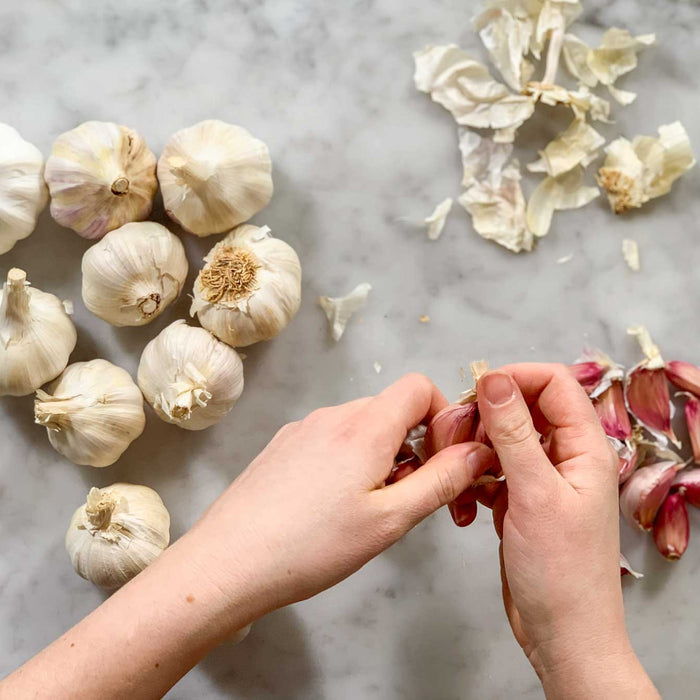
Joshua McFadden's Butternut Squash with Sausage, Sage & Spicy Chiles from Six Seasons of Pasta
A handmade casarecce recipe from Joshua McFadden’s Six Seasons of Pasta, featuring a silky butternut squash, sausage, and sage sauce.

This mango habanero hot sauce is one of our all-time favorites. And it's easily one of our most requested fermented hot sauce recipes.
What makes it so good? Fermentation. It adds bold, fruity heat and layers of deep, complex flavor. We’re talking specifically about lacto-fermentation—a natural, probiotic-rich method that builds umami and transforms simple ingredients into something truly special. The process is surprisingly easy: just gather your ingredients, follow a few simple steps, and let time do the rest. Our Fermented Hot Sauce Kit makes it even easier, giving you everything you need to get started.
Ready to start making your own homemade fermented hot sauce? Great!
The main ingredients of this fruit-forward hot sauce are mangos, habaneros, and ginger.
When choosing mangos for this recipe you want to go with ones that are ripe, but not overly ripe. They should still be a bit firm (not squishy) and smell deliciously of tropical mango.
We love pairing habanero peppers with fruit-forward hot sauces, they pack some real heat are delightfully fruity and readily available year-round. Scotch bonnet peppers, which you may use in some Caribbean-style hot sauces, also work beautifully in this recipe (but aren’t as easy to find). The heat level on this sauce is hot (you’re using lots of peppers here!), so if you are looking for a fruitier pepper with a lower heat level, Fresno peppers work great too (and are the star of our Fermented Peach Hot Sauce Recipe). To make this hot sauce even hotter, you can leave the seeds in or add a couple super-hots (like Carolina reaper peppers or ghost peppers).
The flavors of this hot sauce are rounded out by the addition of ginger, garlic, and onion. Fresh ginger plays beautifully with the fruitiness of the mango and the spiciness of the habanero. You’ll only taste hints of ginger in your finished hot sauce, but it will be enough to add depth to the mid-range of your palette. That way, you’re not just taste fruit and capsaicin (aka the chemical that makes peppers so spicy).
Once all your ingredients are selected, you’re just going to give them a few chops, add them to your glass fermenting jar, top with your fermentation weight, top with a saltwater brine, and cover with a lid and airlock for a couple weeks. (Don’t worry, there’s a more detailed recipe below). The glass fermentation weight keeps your ingredients submerged under brine. During lacto-fermentation, this is important. The brine protects your ingredients and keeps them fresh throughout fermentation. And when your hot sauce is finished fermenting, add a cup of vinegar and a cup of brine before blending to your desired consistency. Then, douse it over everything you eat!
After tasting your first homemade hot sauce, you’ll be hooked. If you’re anything like us, you’ll be making batch after batch and have a fridge stocked with fermented hot sauce.
FarmSteady started with a simple idea: make projects like this easier to jump into.
$40.00
More about this kit →
A handmade casarecce recipe from Joshua McFadden’s Six Seasons of Pasta, featuring a silky butternut squash, sausage, and sage sauce.

Hot sauce probably isn’t the first thing that comes to mind when you think of honeydew melon. Honeydew is fresh, sweet, and cooling... everything that hot sauce usually isn’t. But that contrast is exactly what makes this recipe so special....

Fermented garlic is the flavor upgrade your kitchen has been waiting for—bold, deeply savory, and bursting with rich umami flavor. Not only does lacto-fermenting garlic mellow out its sharp bite, but it also creates a versatile, ready-to-use condiment that instantly...
Comments
Leave a comment